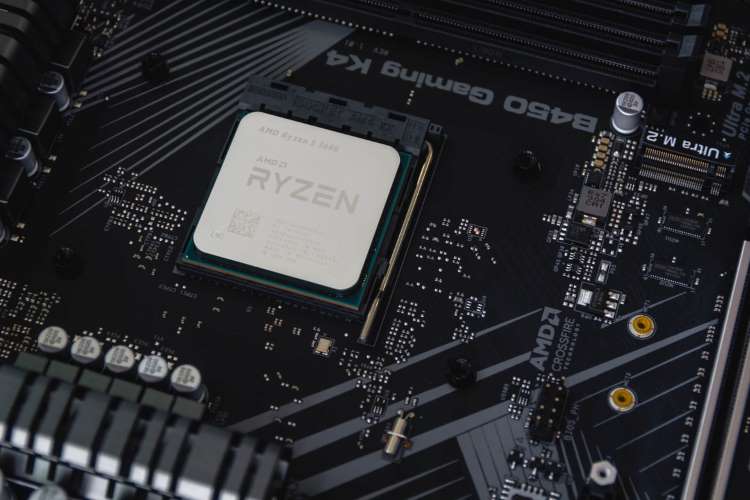Vedanta and Taiwan’s Foxconn signed an agreement with the Gujarat government on Tuesday to set up a semiconductor and display manufacturing facilities at a cost of $19.5 billion. The announcement kicked up a political firestorm as the companies were slated to sign a deal with the Maharashtra government after concluding talks in July 2022. The agreement is a significant one for the country as it finally managed to find takers for its plan to become a semiconductor hub after several failed attempts in the last 20 years.
The proposed investment is the largest single one by any group in India. Prime Minister Narendra Modi said the deal is an important step in India’s semiconductor manufacturing ambitions and the investment will boost the economy and jobs. New Delhi has been making a push to expand its capabilities in the critical semiconductor industry after the unavailability of semiconductors hit various industries after the Covid-19 pandemic broke out in 2020.
Market share of semiconductor manufacturers
The US continues to be the world leader in manufacturing semiconductors and has market share of about 50% worth $208 billion in 2020. China is fast catching up, while India has a fairly small presence in the industry.
READ I Energy crisis may trigger European recession, social unrest
Vedanta and Foxconn have entered into a 60:40 joint venture to set up an integrated display and semiconductor fabrication ecosystem. One of the goals of the project is to make India self-reliant in electronics through expansion of its presence across the value chain. The project would be extremely beneficial to the host state. It was estimated that the project will bring in Rs 26,200 crore SGST, up to 1,00,000 direct and indirect job opportunities, and $21 billion direct and $5-8 billion additional investment. Moreover, nearly 150 plus companies across the value chain would also benefit.
Opportunity in semiconductors
Semiconductors are the brain of any electronic device. Electronics depend on transistors. The importance of semiconductors in day-to-day living cannot be emphasised enough as they are literally everywhere from mobile phones in pocket to spacecraft. There are more than 100 billion integrated circuits in daily use around the world, according to the Semiconductor Industry Association (SIA), a US trade group.
During the coronavirus pandemic, the semiconductor industry brought the world to a standstill as not enough of them were available to meet the skyrocketing demand for devices. Even now there aren’t enough chips in the world to meet the soaring demand. Global chip sales hit $48.8 billion in October 2021, a 1.1% increase over September and a 24% jump from October 2020, as per SIA estimates.
It is no surprise that India has also understood that the future lies in the industry. As of 2020, the Indian semiconductor market was pegged around $15 billion, while it is expected to grow to around $63 billion by 2026, according to the Ministry of Electronics and Information Technology (MeitY).
Govt initiatives for semiconductor industry
The semiconductor sector has been abuzz since the Modi government announced a slew of incentives for the electronic components and semiconductor industry. The mover highlighted the importance India attaches to the crucial sector. The National Policy on Electronics 2019 (NPE 2019) was aimed at driving the capabilities to develop core components such as chipsets.
READ I India slips on Human Development Index as Covid-19, Ukraine crisis weigh
Under the scheme, a financial incentive of 25% on capital expenditure for the identified list of electronic goods is provided. This scheme is applicable to investments in new units and expansion of capacity/ modernisation and diversification of existing units. The schemes involve an outlay of over $10 billion and the government has declared incentives for every bit of the supply chain including electronic components, sub-assemblies, and finished goods. A total of $7.5 billion was sanctioned under the Production Linked Incentive scheme for large-scale electronics manufacturing.
India had made several attempts to become a major player in this strategically important industry. In 2007, Intel showed interest in setting up a facility in India, but went on to have units in China and Vietnam. after showing interest in India. Proposals by Jaypee Group and HSMC were approved in 2013, but the companies failed to woo investors.
The Modi government’s semiconductor plans got a shot in the arm when global consortium ISMC Analog Fab inked an agreement with the Karnataka government in May to build a $3 billion semiconductor fabrication plant in partnership with Israel’s Tower semiconductors.
India’s semiconductor market is expected to grow to $63 billion by 2026 from around $20 billion at present. But, will the Vedanta-Foxconn project will help India become a global player, only time can tell. While India has incentive schemes worth $10 billion in place, its competitors are shelling out big money to keep semiconductor manufacturers interested. The US has a $52 billion package for the chip manufacturing industry while China has incentives worth $150 billion till 2025. India is not among the top 10 manufacturers, but the latest deal can be a watershed moment.
To become a global hub in the electronic components and semiconductor industry, India needs to be more ambitious in creating a domestic semiconductor industry. This means that all backward linkages need to be taken care of instead of merely offering funds as an incentive for companies to set up shop in the country.
Semiconductors and display manufacturing are capital and technology intensive with long gestation and payback periods. India is looking for both capital support and technological collaborations. The government must also fund research and development (R&D) to future-proof innovations. While the stage is set, it remains to be seen whether initiatives that the government is sponsoring will overcome the obstacles raised by bureaucratic red tape and unpredictable tax and regulatory regimes.

